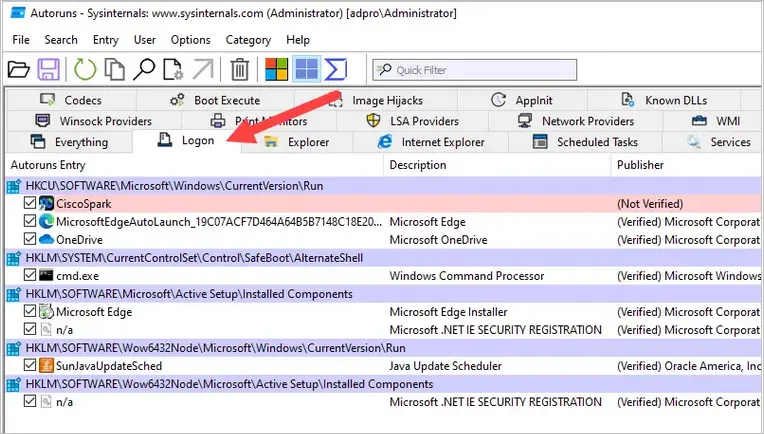In this guide, you will learn how to disable startup programs using Group Policy.
Startup programs are applications that automatically run when the computer starts or after a user logs in. This can cause unwanted software notifications, use of additional hardware resources, and unwanted behavior.
Startup programs can be an annoyance and you may want to disable them on all computers in your network. Follow the steps below to disable startup programs using GPO.
Step 1. Find Application Registry Key
Startup applications typically have a registry key created in one of the following locations.
- All Users 64-bit software:
- HKEY_LOCAL_MACHINE\SOFTWARE\Microsoft\Windows\CurrentVersion\Run
- All Users 32-bit software:
- HKEY_LOCAL_MACHINE\SOFTWARE\WOW6432Node\Microsoft\Windows\CurrentVersion\Run
- Current Users 64-bit software:
- HKEY_CURRENT_USER\SOFTWARE\Microsoft\Windows\CurrentVersion\Run
- Current Users 32-bit software:
- HKEY_CURRENT_USER \SOFTWARE\WOW6432Node\Microsoft\Windows\CurrentVersion\Run
You can open the registry editor to view any programs that have created a key in the above paths. An easier option is to use Autoruns for Windows, this program will list all registry entries in the auto-run locations.
1. Install and open Autoruns on the computer that has the startup program you want to disable.
2. Click the Logon tab and you will see a list of all startup registry keys.
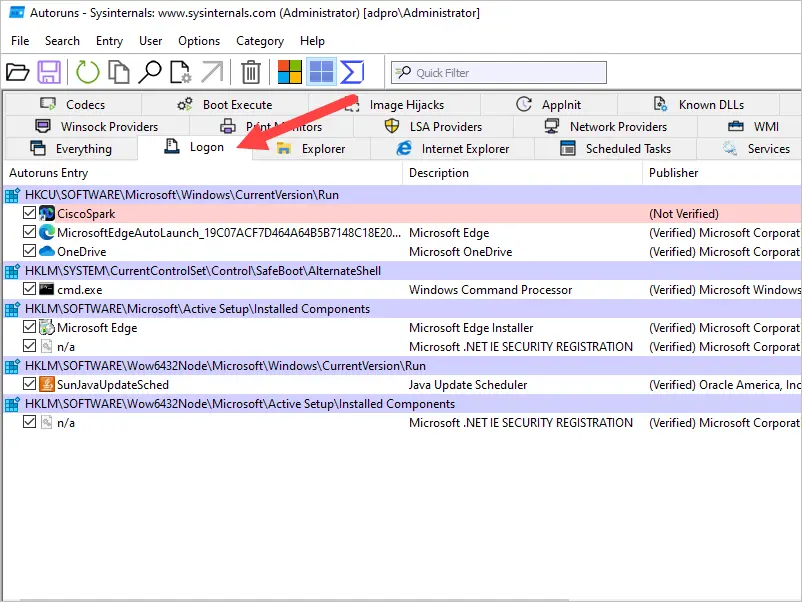
In this example, I want to disable the webex client and java update scheduler from auto-starting. Using AutoRuns I can easily see the registry path and key for both programs. I’ll use these details in step 2.
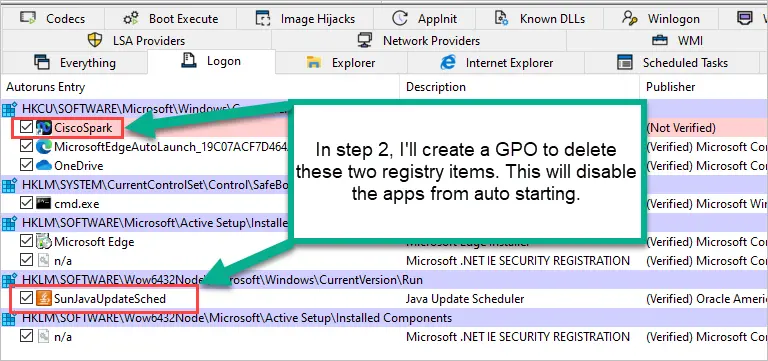
Step 2. Create GPO to Delete Startup Program Registry Key
Now I’ll take the registry keys I found in step 1 and create a GPO to delete them.
1. Open the Group Policy Management console.
2. Create a new GPO or modify an existing one.
Find the location where you want to create the new GPO. In my example, I’m going to create a new GPO at the root of the domain, this will target all users in my domain. You may have different requirements such as targeting specific users in an OU. Give the new GPO a descriptive name for example “Delete Startup Apps Reg Key”.
Browse to the GPO settings:
User Configuration -> Prefences -> Windows Settings -> Registry
Right click and select new -> Registry Item
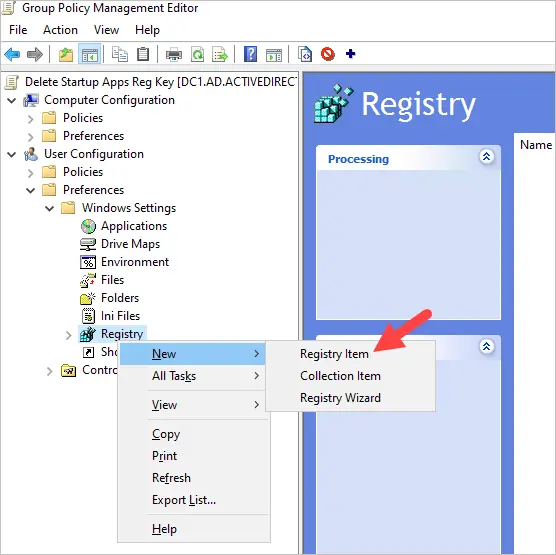
Now enter the details for the startup program you want to disable. If you have multiple programs you will create multiple registry items.
First, I’ll add the Webex client.
You need to set the following:
- Action = Delete
- Hive = The applications registry hive
- Key Path = registry key path
- Value name = Applications value name
The example below is for the Cisco Webex client installed on my computer.

Now I’ll create another registry item for the Java Update Scheduler.
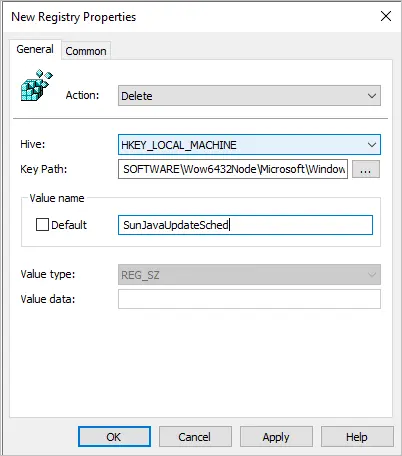
Here is a screenshot of my GPO settings.

The last step is to reboot the computer or run the gpupdate command to update the GPO policies. You could also just wait for group policy to refresh on its own.
After the GPO has applied I’ll open Autoruns to see if the registry keys have been deleted.
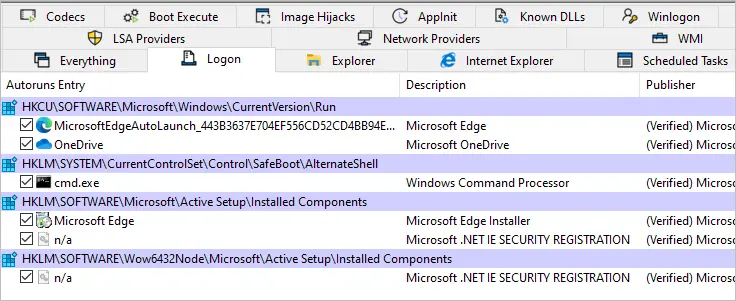
Success, the webex and java updater startup programs have been disabled.
I can also verify this by opening Task Manager to verify they are not running.
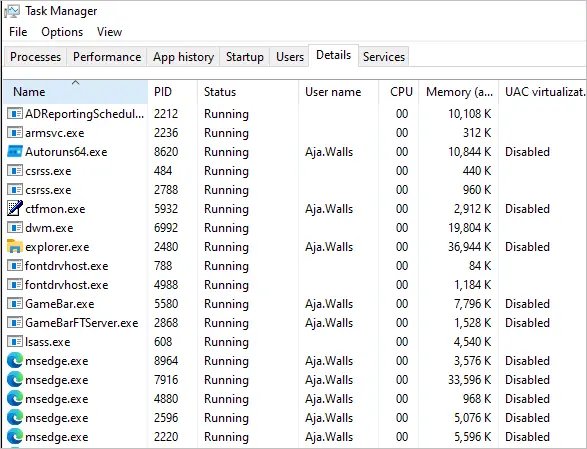
It is important to know that this will not remove any program shortcuts on the desktop or start menu. Refer to the How to delete a shortcut using GPO article for instructions.
Thats it.
Recap of steps.
- Find the program startup registry key (use autoruns)
- Create a GPO to delete the registry keys
- Run gpupdate
- Delete shortcuts (optional)
- Repeat
If you have questions or comments post them below.
